What is one fashion piece that you think is expensive, but you can’t stop getting attracted to?
And you don’t mind investing at least once in your lifetime?
Yes, the name is Leather Goods!
After all, It’s a fashionable standard that will never go out of trend.
Well, you must be thinking this blog writer is all bonkers as you see the topic is Veg tanned Leather. Let me come to this in a while.
First, let me show you the intersection between the price and leather products! After all, you need to know the truth.
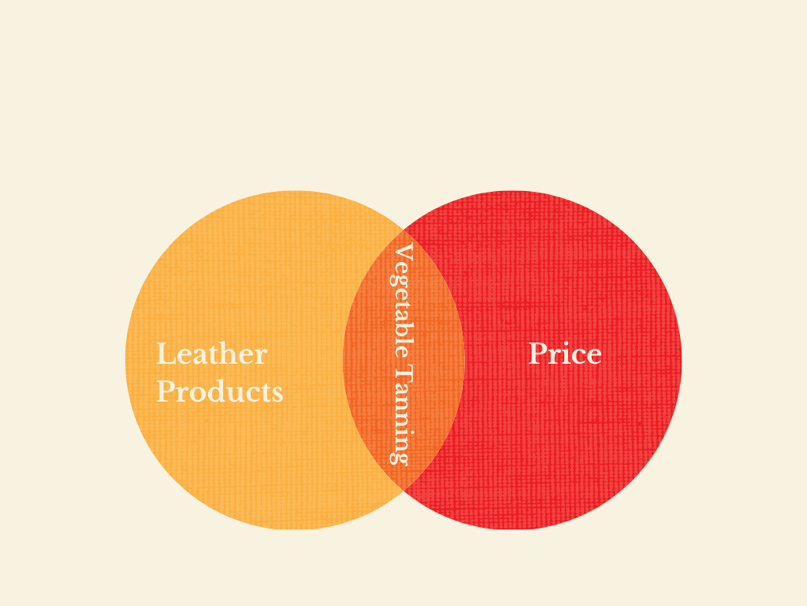
Yes, apart from procuring the finest leather and detailed craftsmanship, the cost includes a process called Vegetable Tanning.
Vegetable tanning is an artistic expression that has a rich history of perseverance and expertise. Vegetable tanning simply refers to how cowhides are colored. However, it particularly refers to the use of natural ingredients from tannin-rich plant components to endow the leather with a deep tone.
To organically color the leather, bark components from trees such as the chestnut, quebracho, and mimosa are utilized. This produces a warm, deep texture that highlights the texture of the leather.
What is Vegetable Tanned Leather?
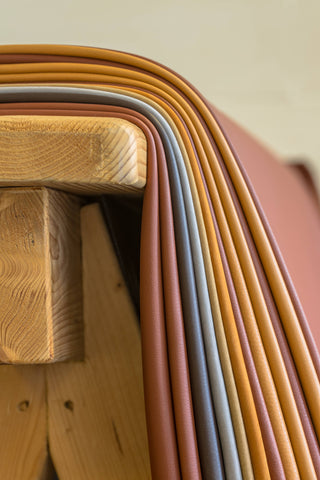
Tannage, or the technique of tanning cowhide into leather, is referred to as vegetable-tanned leather. It is referred to as “vegetable” because organic fibers such as tree bark are utilized in the tanning process. Vegetable tanning, often known as veg tan, is one of the earliest tanning techniques known to humankind. It has existed for millennia. However, fewer than 10% of the globe’s leather is now tanned in this manner.
Vegetable tanning is distinctive in that it allows us to utilize thicker leather, resulting in greater depth and individuality – ideal for bag manufacturing. Vegetable-tanned leather also ages well and acquires a beautiful sheen over time. And it smells like vintage leather.
Is vegetable Tanned Leather Real Leather?
We are talking about an exotic leather material when we say vegetable tanned. Approximately 10% of all leather is vegetable tanned. That means finding genuine vegetable-tanned leather is somewhat challenging.
Answering your question, is vegetable-tanned leather real leather? YES!
Vegetable tanning is the most traditional way of tanning leather sheets. This technique involves using natural vegetable tannins to alter the protein structure of the hide, causing it to become leather.
The entire process makes the leather sheets so immaculate that it becomes very durable and can endure heavy usage. Our artisans spend four to six weeks perfecting each piece that they touch.
How is vegetable tanned leather made?
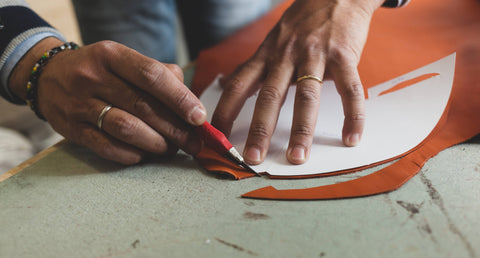
Vegetable-tanned leather is ecologically beneficial because it is a natural process. It differs from the considerably more typical chrome tanning technique in that it is completely free of harmful chemicals.
4 steps are followed to get the perfect Veg TannedLeather
1. Before Tanning
First, the skins must be prepared. As a result, they spend a few days blanching the hides and eliminating the hair. The hide is divided into two halves called sides.
2. Tanning
The divided skins are then placed in huge vats of organic tannin. Tree bark is one of these natural tannins. The skins soak in this tanning solution for a couple of weeks and must be cared to often to achieve full absorbance. The leather is then scraped, the remaining liquid is taken out, and trimmed to the appropriate depth (from the backside).
This is the hard part for vegetable-tanned leather that has not been colored. The hue of the vegetable tan leather is light, almost pink. However, the veg tan leather we use is again colored to provide the vivid shade and texture that distinguishes our leather.
3. Dyeing, Hot Stuffing, Drying
The tanned skins come at this stage as a blank canvas, waiting to be filled with rich color and character. The skins are colored in massive drums that revolve in the air like a wine barrel on steroids.
Our leather is then hot-filled, which is a unique technique that stuffs the leather skin to its core with paraffin and developing applications to give it a deep color and increase its durability.
The skins are then dried and stretched. Staking is a technique that slightly relaxes the leather.
4. Finishing the leather
The skins are treated with paraffin and varnish for preservation at this point. Furthermore, vegetable-tanned leather retains our life’s traces. It is extremely sturdy and will last for years. Additionally, because vegetable-tanned leather possesses chemical-biological properties, the object may be simply discarded at the end of its long life. This is long-term, deliberate, and sustainable manufacturing.
The entire procedure is time-consuming and productive, and it can take up to six weeks to finish.
Why vegetable leather over chromium tanned leather?
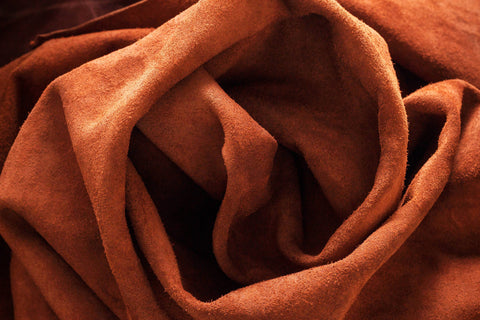
While chromium or chrome-tanned leather is less expensive to produce and retains its color for a longer period of time, vegetable-tanned leather has the durability and beauty that only an exquisitely produced product can provide.
Chrome-tanned leather is frequently coated with acrylic varnish on the borders, leading it to fracture, peel, and break after only a few years. Furthermore, because chromium is a heavy metal, it is extremely hazardous to both the ecosystem and the individuals who work with it.
Vegetable-tanned leather items continue to mellow and acquire a lovely patina as they age due to the long, slow conventional methods used to prepare the hides for vegetable-tanned leather.
Saddles, holsters, belts, wallets, notebook covers, bags, shoes, and handbags manufactured from vegetable-tanned leather will become even more pleasant the longer you wear them.
Vegetable-tanned leathers’ edges are polished or turned, indicating that this leather is built to survive for years. This type of leather is often stiff at first but becomes more flexible with time and wear.
Furthermore, vegetable-tanned leather has a unique “leather” scent, as opposed to the normal chemical odor of chromium-tanned items. The scent is sweet, woody, and opulent.
Also, the natural leather tanning procedure resulted in distinct variances in hue and color.
The natural fibers of the animal’s hide are visible, giving to its individuality. A single piece of vegetable-tanned leather is genuinely individual.
Lastly, due to its handcrafted character, vegetable tanning creates some of the strongest, most resilient leathers accessible.
Because it is less flexible than chromium-tanned leather, it is employed in applications where rigidity is advantageous, including saddlery, holsters, wallets, journals, travelers’ notebooks, and purses. Vegetable-tanned leather is more costly than chrome leather due to the artistic quality of the tanning process. It is typically used for high-end, crafted leather items.
However, it softens and is stretchable over time, so many producers use it to make shoes, purses, belts, and other long-lasting items.
While this technique of tanning consumes a significant amount of water, it does not harm the environment in the same way as chromium-based leather dyeing does. The vegetable tanning method also uses less apparatus and hence less electricity.
Pros And Cons of Vegetable Tanned Leather
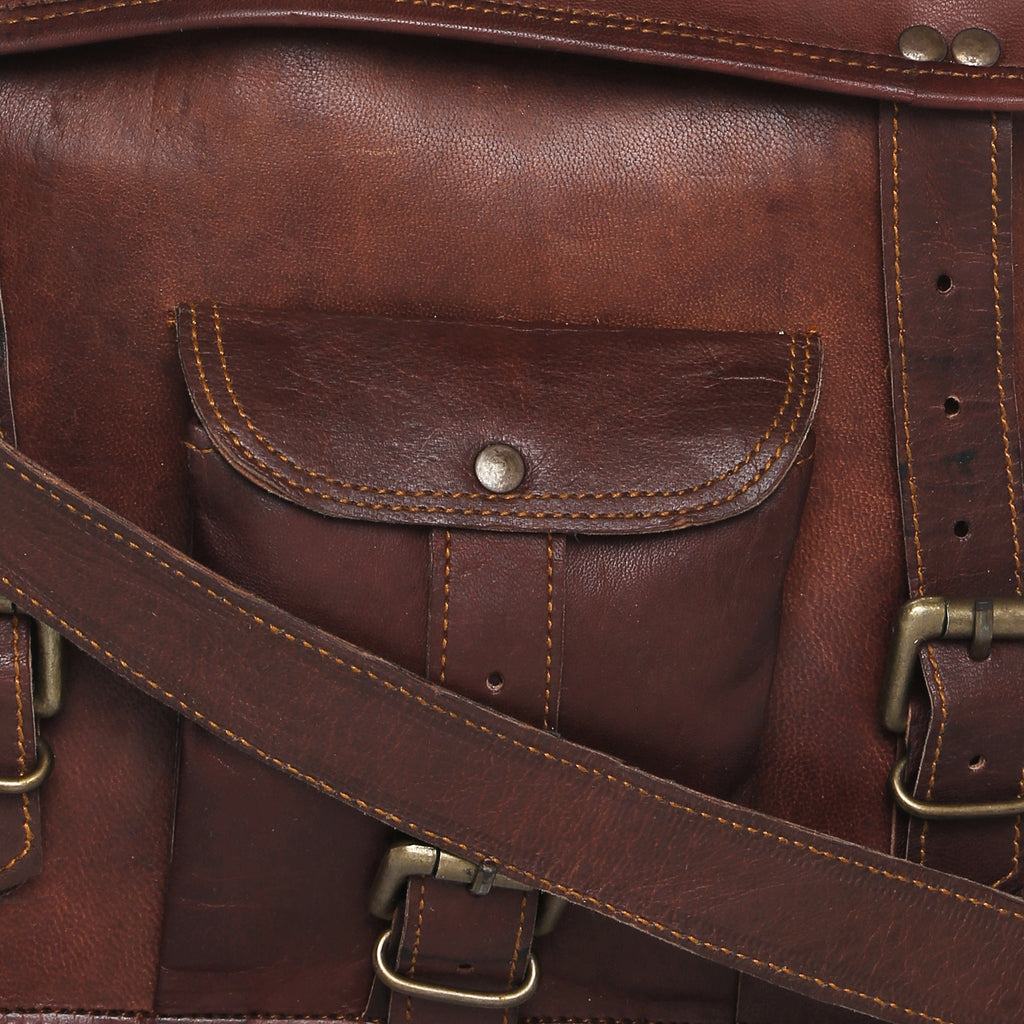
Pros:
- Vegetable-tanned leather, which uses only organic tannins, has no detrimental ecological effect
- Because the tanning technique is old and involves experienced artisans, vegetable-tanned leather items are more renowned.
- Vegetable-tanned leather acquires a deep and attractive patina as a result of the meticulous tanning process and innate tannins, and it really improves with time and usage. Since it does not break or wear out, which has a very finite lifetime.
- It has a rustic, organic texture and scent.
Cons:
- Vegetable-tanned leather is originally rigid and must be worn in before it can be fully supple and useful.
- Vegetable tanning produces colors that are less vibrant than chromium tanning and darken with time.
- Vegetable-tanned leather is much more pricey since it takes 30-60 days to manufacture.
Read More: 8 Best Leather Laptop Bags At Affordable Prices
Environmental impact of vegetable leather
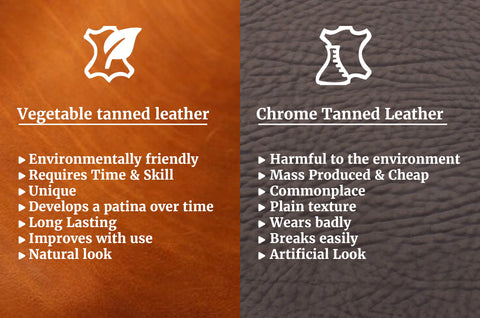
The solvent kind and manufacturing duration are the two main elements that separate vegetable tanning from chemical tanning. Vegetable tanning use chemical-free solutions produced from organic sources such as tree bark.
The procedure can take up to 14 months, but because of the delicate technique, the inherent fibers of the skin are conserved, leading to a more unique, attractive, and long-lasting leather. It also has the wonderful scent and feels of genuine leather.
The chemical-free technique of vegetable tanning is better for the environment and the health of tannery workers since it relies on organic materials and human labor rather than machinery and toxic chemicals used in current procedures.
Unfortunately, there are few remaining traditional leather tanneries in India today; the long and labor-intensive manufacturing method is expensive, making traditional tanneries hard to compete with, and these ancient skills are rapidly disappearing.
Why is vegetable tanned leather so expensive?
Well everyone complains that real leather is somewhat expensive. What if we give you an option between a Ferrari and a Toyota, what would you choose? We love commodities that have real heritage behind them, just like a Ferrari going for a vegetable-tanned leather good would bring real value.
Well when we talk about leather being pocket-friendly, a lot of manufacturers claim to sell real leather for cheap. Its because it is mass-produced and has no exclusivity.
We as a brand make sure that every leather good is handmade and vegetable-tanned. Our artisans put in their year’s worth of experience to our every commodity. That’s why it sometimes gets a little expensive.
Cheap products don’t last longeeeeer!
How to take care of vegetable leather products?

Our trademark leather is obtained from the cowhide’s full-grain section, which has the finest and most resilient texture. As a result, we feel you must allow our leather to circulate.
- Carefully wipe the outside of your bag with a clean towel soaked in a basic soapy water solution.
- Kindly do not use chemicals cleaners or conditioners to cleanse your bag as they might degrade the texture of the leather, having a negative effect.
- If it rains, gently blot off any droplets of water quickly and then allow the bag to air dry away from the direct heat source. Do not put the bag near a heater or try to dry it with a hair drier. It is feasible to hurry the drying process by stuffing the sack with newspapers to retain water.
4 steps to know if the leather is vegetable tanned?
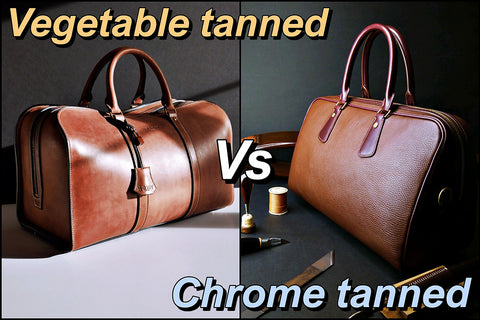
We have brought you 4 proven tricks that will help you identify a fake leather good.
- Price
First would be the price, it’s most obvious that no real leather-making company would sell their expensive leather sheets for a dime. Look our for pricey tags and If it says ‘genuine leather’ or ‘100% real leather’ go ahead, because a real leather bag is always a pricey game and you won’t find something too reasonable.
- Smell
Real leather smells very pleasing. Use your sense of smell to test for the originality of leather bags. Real leather always smells ‘leathery’ even if it is treated while fake leather always smells plastic or synthetic.
- Structure
The biggest telling sign between original and fake leather bags is the overall quality. When you placed both down, the authentic leather bag will be much sturdier, structured, and stand up straight. The fake leather will not stand straight; stay folded, and will not be structured.
- Imperfect surface
Does the surface of the bag feel like pebbles or grainy? Real leather has an inconsistent pattern with minor imperfections. Fake leather is uniform with evenly spread pores which shouts fake! Moreover, real leather is made of natural animal skin and has uneven pores like ours.
How to waterproof vegetable-tanned leather?
Vegetable-tanned leather, on its own, is not waterproof. Water can ruin the entire look of your expensive leather bag. Though you would love to rock your favorite leather bag every season.
For that, you would need to waterproof your bag. There are many creams and wax available in the market that help your leather be less vulnerable to water. Make sure you get your cream from a decent company as you would not want to experiment with it with your leather bag.
Why cowhide is the best for the vegetable-tanned process?
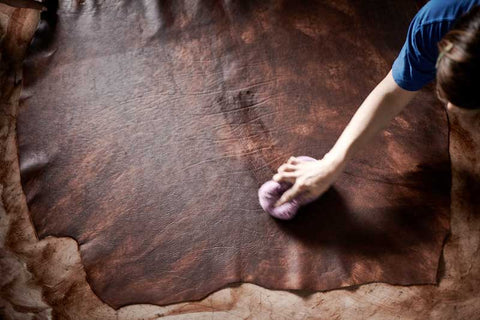
What do you expect from your leather bag? Max endurance, max reliability, max durability, and whatnot. Choosing the correct hide type is very crucial as it directly impacts your everyday usage.
Always choose the leather that can be used in every season. Too much sunlight and water sometimes ruin the look of the leather. You can choose cowhide as it is the best option in the market.
Cowhide offers incredible strength. It is one of the best leathers to date when it comes to practical life. If a cowhide is veg-tanned the leather is bound to last for years and years
Advantages of Veg tanned leather
There are plenty of reasons why veg-tanned leather can be a great choice. Talking about the very first advantage is that is earth safe. Because vegetable tanning requires no synthetic coatings and other harmful additives, it’s safe to say veg-tanned leather is 100% earth-friendly.
Veg tan leather, is also renowned for its robustness and strength. Aside from durability, the vegetable tanning process also gives leather a distinct, somewhat sweet aroma. Knowing that the leather has been painstakingly produced by expert artisans, you know that you are special.
Disadvantages of Veg tanned leather
Our first flaw kinda backs out advantages because veg-tanned leather is expensive, but still, it is important to factor in other considerations, such as the superior quality, longevity, and aesthetic of vegetable-tanned leather.
As far as actual qualities, vegetable-tanned leather can at first feel solid, even though will bit by bit relax on the surface over the long run. Furthermore, because it’s not treated with manufactured synthetic compounds, different varieties of hide frequently have a more prominent degree of water opposition
Does veg-tan leather darken over time?

Yes! Just like our skin, even leather gets tanned and darken over time. Ordinary wear will obscure the cowhide as air, light, the oils of your skin, and other natural elements take care of their responsibilities, in the long run fostering a rich tone and patina.
Sun openness, day-to-day taking care of, water, and molding give regular vegetable-tanned calfskin a provincial investigation time.
Is vegetable-tanned leather biodegradable?
Vegetable-tanned leather is produced using natural techniques or skin, a characteristic biodegradable material, and a result of the meat business. Vegetable-tanned can be treated in the soil yet the natural effect and the biodegradability of the calfskin depend, among others, on the tanning science being utilized.
But, not all leather materials are biodegradable. A lot of leather materials out in the market are usually synthetics. These materials are not considered real leather. Also even vegan leather is not biodegradable.
Why is it the most preferred leather for making leather bags?

Vegetable-tanned leather matures indefinitely — as you use it, it organically responds to its environment, shining up beautifully and deepening in color.
Most individuals, however, have never tried a full-grain leather product since they are not as prevalent as, for example, synthetic leather or “genuine” leather items. The vast majority of volume leather goods employ top grain – which has the topmost layers smoothed off, lowering sturdiness – or legitimate leather, which is a rapid and inexpensive means of manufacturing leather goods; however, it does not last very long.
All of our premium leather items at Junyuan Bags are manufactured from 100% full-grain vegetable-tanned leather. Each product is meticulously handmade by the greatest craftspeople, delivering exceptional utility while maintaining a simple appearance that exudes unrivaled beauty and flair.
How long does it take to vegetable tan leather?
Veg tanned leather is famous for its tanned look. The pleasing smell and luxe feel of the leather are world-famous. The entire process of leather tanning is quite fascinating.
From getting the hides salted to prevent them from catching bacteria, then removing hair to keep the surface smooth. Over the course of 30-60 days, the hides are regularly moved into different drums filled with tanning solutions of varying concentrations.
Thereafter the leather gets oiled and gets ready to get spread on luxury v12s and flashy products.
Checkout some of Vegetable Tanned Leather Bag collection.
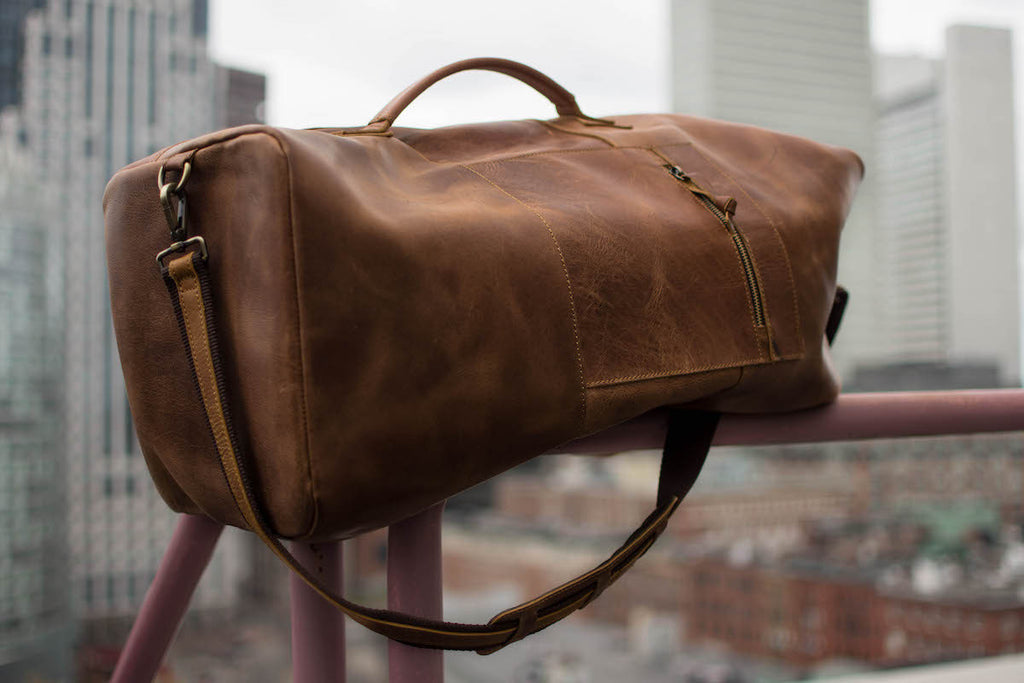
Leather Military Duffel

Leather Hiking Backpack

Full Grain leather messenger




 Mobile/What's App/Wechat
Mobile/What's App/Wechat E-Mail
E-Mail ADD
ADD




